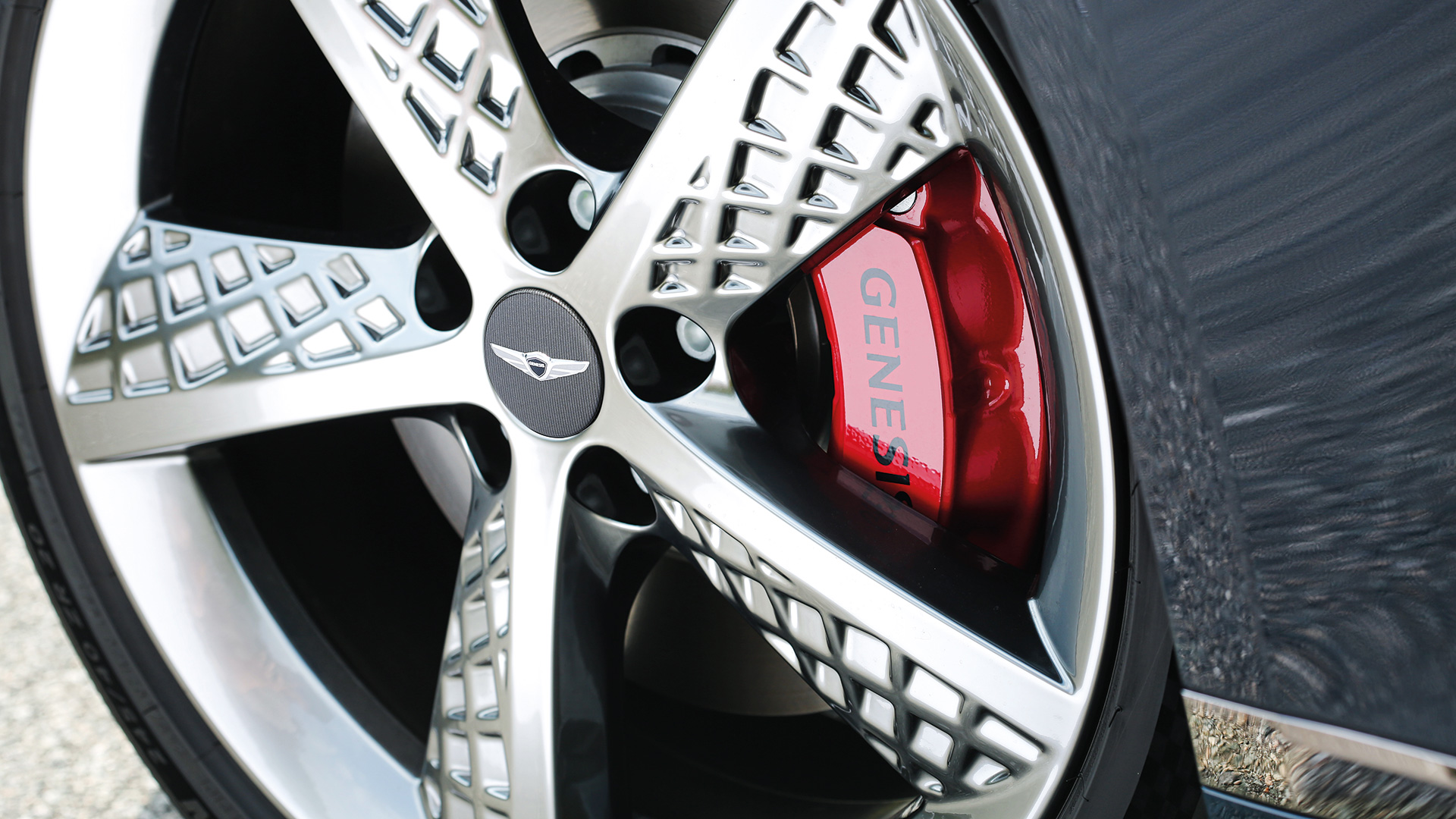
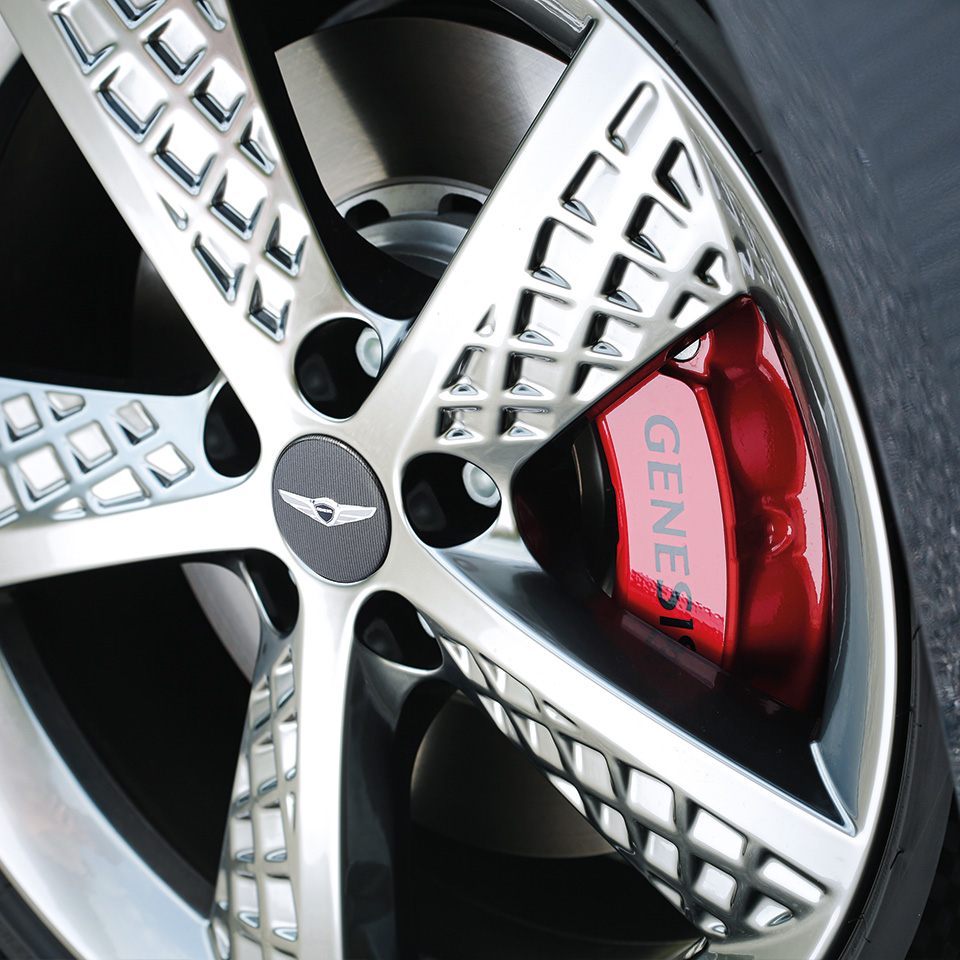


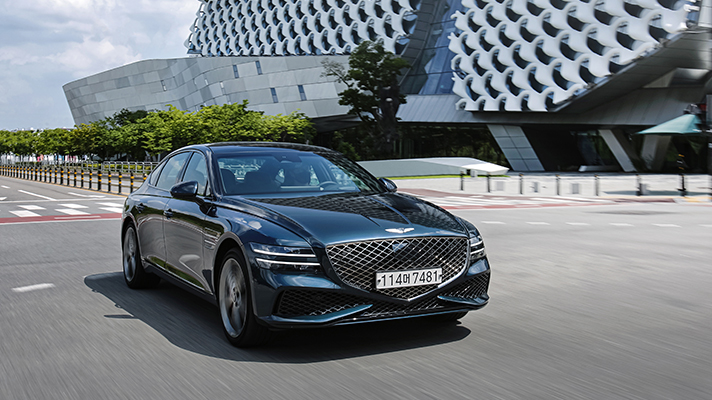
What would be the signature model of the luxury brand Genesis? Many would probably say the flagship model G90, for its size, price, and its luxury. But in fact, Genesis' signature model would be G80. This model was the first to use this name before Genesis became an independent brand. And since the second generation was released in 2013, the Genesis name became known abroad in earnest. The current 3rd generation G80 is a model that reflects the new design philosophy of the Genesis brand. The fact that more than 50,000 units have been sold since its launch in March 2020 until the end of that year proves its value.
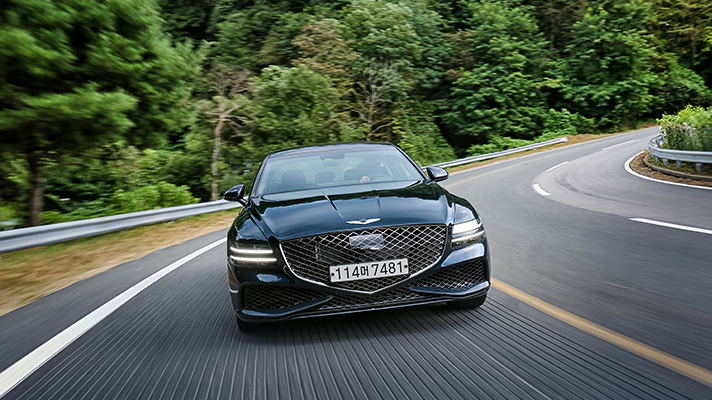
The biggest feature of the newly launched G80 Sport is that it has expanded the range of choices for consumers. The customized product strategy (Bespoke), which is recently spreading throughout society, is more important in the luxury market. This is because it is not just an identically manufactured product, but can be customized according to each user's taste. In the luxury market, the satisfaction of 'owning my thing’ becomes very crucial. When Genesis launched the GV80, under the name of ‘Your Genesis’, the choices such as powertrain, drivetrain, convenience and safety specifications, exterior color, and interior materials were vastly available. As a result, it became possible to create a unique car using various options.
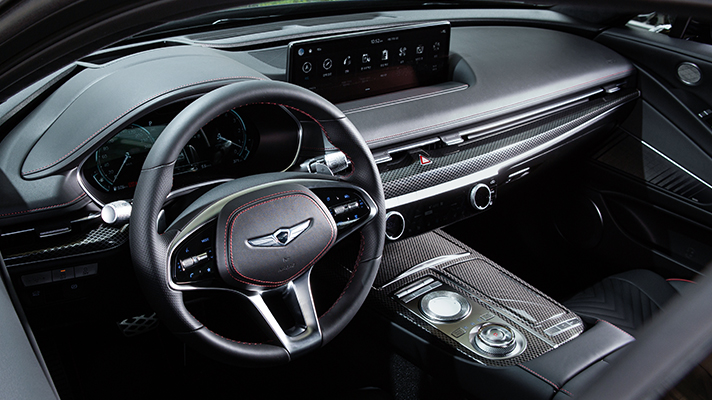
With the addition of the G80 Sport Package, more dynamic design selections are available. One unique visual difference would be the front and rear bumpers with an improved functionality by adding air holes. In addition, it shows a slightly different look with the dark chrome color radiator grille and the side window molding. The interior also revealed a unique atmosphere with a sports-only 3-spoke steering wheel, pedals with G-MATRIX pattern added, sports-specific seat quilting, and exclusive interior garnish. Although it shows a unique design in various parts, it is also characterized by not missing the luxury while strengthening the sporty image to match the character of the large luxury sedan, G80.
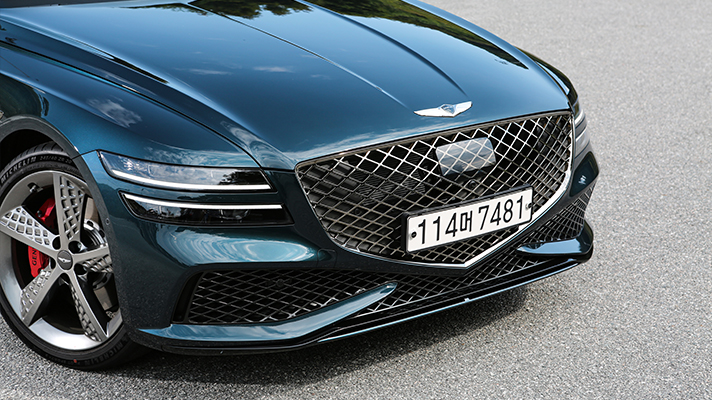
What stands out is that the sports package is available for all engine choices; wheel size, suspension, and front brake caliper color are slightly different. However, they all look completely different from the general G80. You can show off your unique self through your sports package.
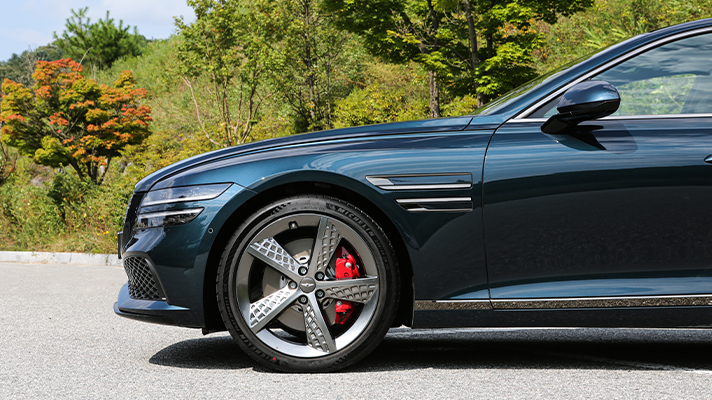
Of course, the core of the new G80 Sport would be the dynamic package only available in the gasoline 3.5 turbo engine option. It houses the 20-inch exclusive wheels with dark sputtering, the Michelin's high-performance sports tire Pilot Sport 4S, Lexicon sound system with 18 speakers, Active Road Noise Control, and many more. And the most highlighted feature would be the Rear Wheel Steering system (RWS) and Sport Plus mode. This is because these technologies are something that complete driving performance.
Rear-wheel steering technology became widely known through several Japanese-made sports models that debuted in the late 1980s. At that time, Japan was experiencing an unprecedented boom due to rapid economic development, and with this, Japanese automakers experimentally applied various new technologies to their mass-produced models. A typical example is rear-wheel steering. However, almost 30 years later, cars using the rear-wheel steering system are coming out again, mainly in luxury large sedans - but why?
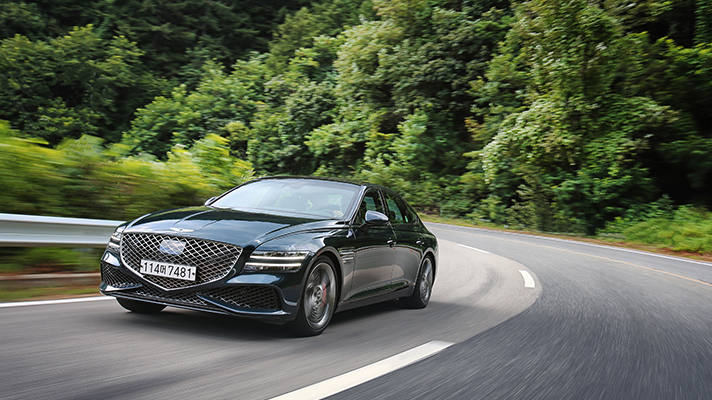
To understand this, we need to know how a car runs, spins, and stops. Basically, a car moves by friction between the tires and the road surface. In other words, the key is to make the most of the limited grip that occurs when the four tires are attached to the ground. To this end, the vehicle transmits power to the front, rear, or all four wheels according to the location and structure of a power source such as an engine or motor. However, regardless of this power transmission structure, the front wheel must be connected to the steering wheel to change the direction of the vehicle. The rear-wheel-drive car has an advantage in its athletic performance because the steering and driving are divided between the front and rear wheels so that the grip of each tire can be fully utilized - at least so far.
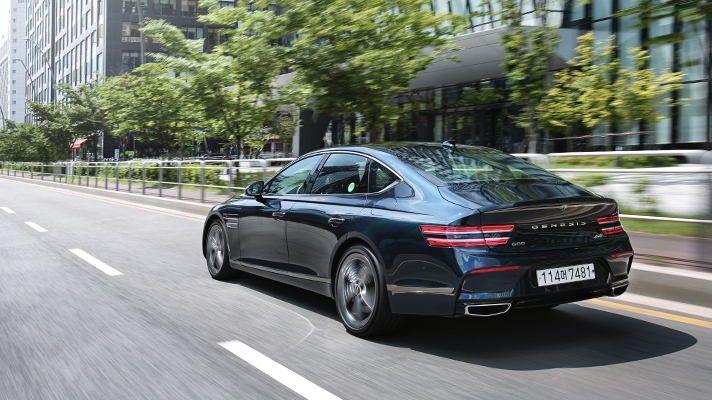
However, as the size of the body gradually increases - as the wheelbase gets increased to expand the interior space, in particular - it brought up many more tricky problems. The two front wheels can only turn up to a certain angle; but as the distance between the front and rear wheels increases, so does the turning radius, and the rear of the car body gets to turn much later. In addition, the urban environment in which cars are mainly driven has become narrower and more complex. This is why the rear-wheel steering technology began to gain popularity again.
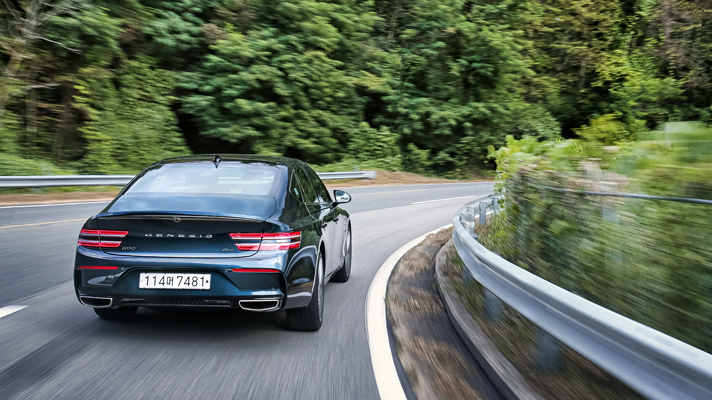
There are two main effects of rear-wheel steering. First, it can reduce the turning radius by turning the rear wheel in the opposite direction to the front wheel. This is very useful when you need to make a U-turn on a one-way road or park in front of an apartment flower bed or sidewalk. It also has the advantage of not having to turn the steering wheel a lot in narrow alleyways. The second effect is to increase the reaction speed of the rear of the body by using the method of turning the rear wheel in the same direction as the front wheel (frostbite). When changing lanes at high speed, if there is no rear-wheel steering function, the front wheel enters the next lane and the rear of the vehicle follows. Rolling resistance is created because the rear wheel fixed in front is dragged to the side, and the longer the wheelbase, the greater the sense of awkwardness. For this reason, the rear-wheel steering system helps a lot in improving both agilities at low speeds and stability at high speeds.
Then, why didn't automakers use rear-wheel steering technology in the first place? Although it may seem not so important, such a system is very difficult to realize in an actual car; in particular, when and how to switch between low-speed reverse phase and high-speed phase in conjunction with the front wheel was a problem that has made many automotive engineers suffer. This is because changing this phase at too low a speed will lose the agility of the inverse phase, and changing it at too high a speed may damage its stability. In addition, securing the durability and control precision of the parts related to rear-wheel steering is also a difficult problem to solve.
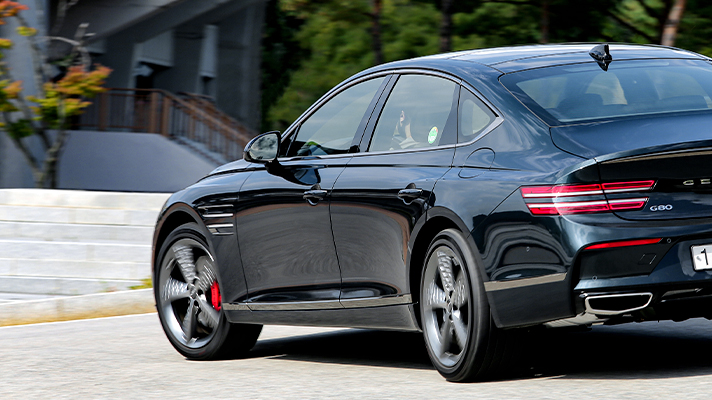
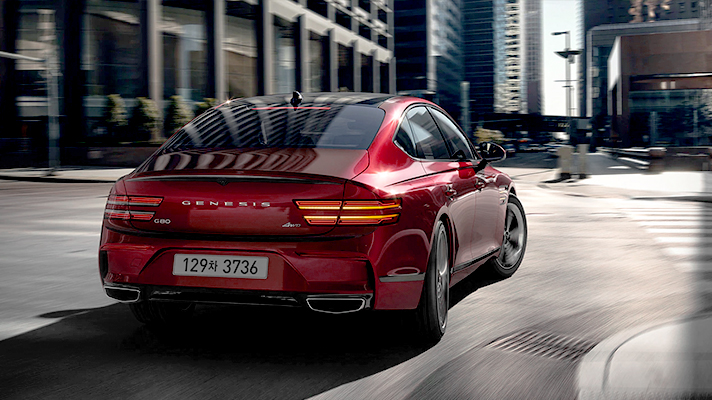
The basic operating principle of the rear-wheel steering system included in the G80 Sport Dynamic Package is the same as previously mentioned. The step motor controller is mounted on the rear subframe, and the angle is adjusted by pushing the assist arm connected to the rear wheel carrier left and right according to the driving situation. When moving forward at low speed, the rear wheel is tilted in the opposite direction to the front wheel up to a maximum of 3.5°, and at high speed, it is tilted in the same direction by a maximum of 2°. It's not much of a change compared to the front wheel that changes direction more than 30 degrees, but the effect is great. The most noticeable thing is when making a U-turn on a narrow road, and the G80 standard turning radius is reduced from 5.81m to 5.45m. The G80, a large sedan with a wheelbase of 3,010 mm, is able to make a U-turn where only a mid-size sedan could so far.
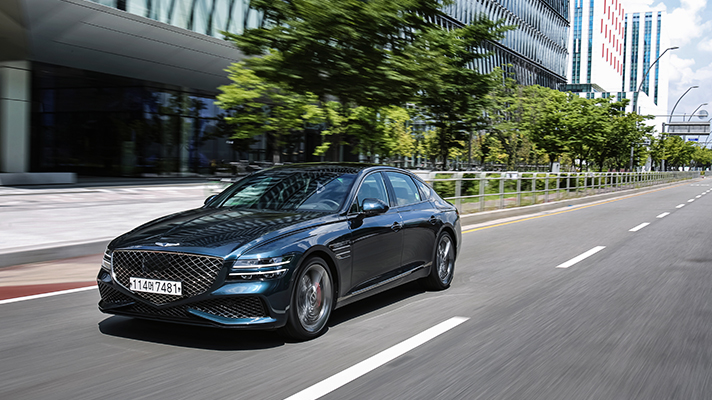
Then, what is different from the past, so why did Genesis use the word ‘active’? This is because, depending on the driving mode, the operating time of switching from reverse to phase is actively changed. The transition point in comfort mode is 60 km/h, and in sport mode, it is 80 km/h. In Sport Plus mode, which was added this time, the vehicle is steered by the reverse phase when the speed is slower than 100 km/h, and by the neutral phase when it exceeds 100 km/h.
The reason for the difference in transition timing is simple. This is to improve driving stability when changing lanes by changing to frostbite early in Comfort Mode, which prioritizes stable driving. Through this, the lateral force (cornering force) of the rear wheel is secured at an early stage, thereby increasing the stability even in snowy or raining roads. On the other hand, in Sport and Sport Plus modes, even at high speed, steering performance is prioritized, so the reverse phase is maintained longer. In the case of the sport mode, the force of the same-direction control is increased compared to the comfort mode to increase stability at high speed. The Sport Plus mode, which does not steer the rear wheel in the same direction as the front wheel, slows the increase in the lateral force of the rear wheel. This is set to increase the frequency response, which is used to characterize the dynamics of the system.
These differences get clear when driving the car. The easiest way to check is to change lanes by changing the driving mode at a medium speed - for instance, switching between Comfort and Sport mode running at 70 km/h, and switching between Sport and Sport Plus mode at 90 km/h. The turning response at the rear of the car is noticeably different.
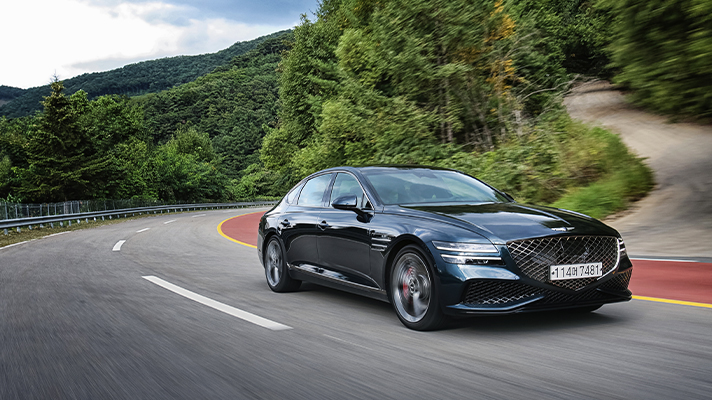
In particular, the effect of the rear-wheel steering system is realized even more greatly when driving fast on winding roads or tracks because it enables optimal turning in conjunction with the electronic body posture control system (ESC). For example, the 11th corner of Inje Speedium is banked outward, so it is difficult to speed over 60 km/h. In a car with a long wheelbase, the load on the front wheels is greater, but if the rear wheels are bent in reverse, the corner speed can be increased. When it comes to technical corners where you have to turn at low speed while enduring high lateral acceleration like corners 4 and 17, it is expected that escape acceleration will be much faster thanks to the rear wheel that follows and accelerates most quickly. According to the test results conducted by Genesis at Inje Speedium, the G80 Sport set in Sport Plus mode twisted the rear wheel by 3.5° at the 4th corner, making it more agile to dig into the corner.
It is difficult to imagine that a vehicle with a length of close to 5m and a wheelbase of more than 3m would travel quickly on a track, but it is Genesis' rear-wheel steering system that makes this possible. In the future, the rear-wheel steering system is expected to play a significant role in handling, ride comfort, and parking convenience in large sedans such as the G90 as well as electric vehicles with a longer wheelbase through a dedicated platform.
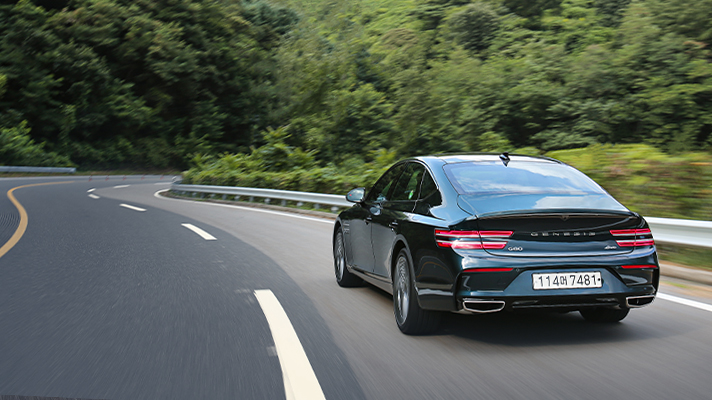
In the dynamic package of the new G80 Sport, the influence of the newly added Sport Plus mode cannot be left out. This proves that the driving sensation can be significantly changed through the process of transmitting power to the wheels without changing the absolute output of the engine. Above all, the change of the pattern at the transmission is large. For example, in Sport Plus mode, when driving at a higher speed then braking suddenly, it lowers the gear and prepares for re-acceleration. It also helps keep the car in constant control by maintaining the current gear without shifting while turning a corner. The electronically controlled damper newly set to match the spring with increased rigidity also shows a satisfactory response. Suspension changes for each driving mode are large, satisfying both daily driving and sports driving while maintaining the elegance of a luxury large sedan without getting too stiff.
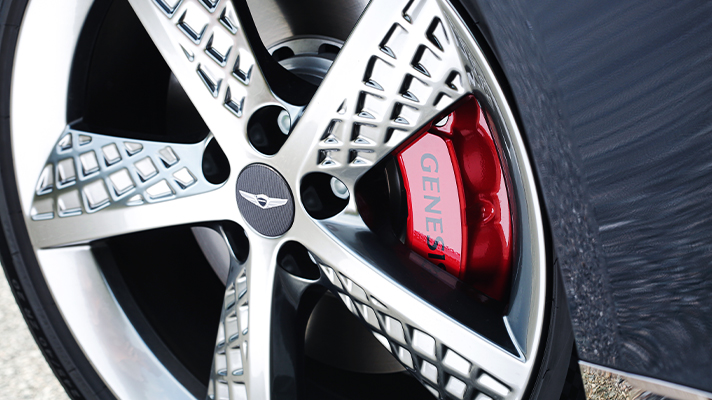
The G80 Sport Dynamic Package allows Comfort and Sport modes for braking according to the driver's preference. This technology, which was first introduced through the GV70, has expanded the range of driver choice as mentioned above. It is a technology that changes the amount of braking pressure generated depending on the stroke of the pedal - how much the pedal is pressed, in other words, - and the brake response becomes more agile in Sport mode. When you are traveling with your family, you can select the sport mode when fast braking is required, such as comfort and winding roads, hence killing two birds with one stone.
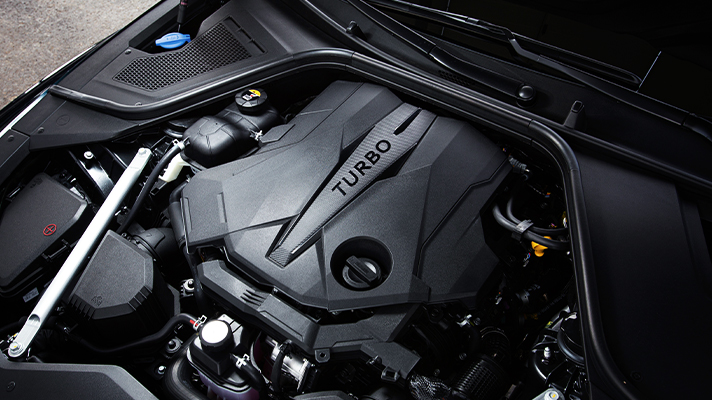
What surprised me was the acceleration feel. Ironically, the sense of acceleration may seem lacking compared to the general G80 3.5 model. This is because the suspension is tighter so that the front of the car gets less lifted. But the truth is that the vehicle will run faster in the sports mode. In addition, if you use the launch control, you might feel even stronger acceleration by utilizing both the high torque and the grip force right before the tire slips.
Acceleration from standstill to 100 km/h has also been reduced from 5.1 seconds to 4.9 seconds, thanks to such robust power transmission, suspension, and tires with exceptionally high grip. You might think that 0.2 seconds is not much of a difference, but it is quite enough to be able to change a heavy-weight body like this without changing the output. Based on the gasoline 3.5 AWD Sport Dynamic Package model, the unladen weight is 1,985 kg.
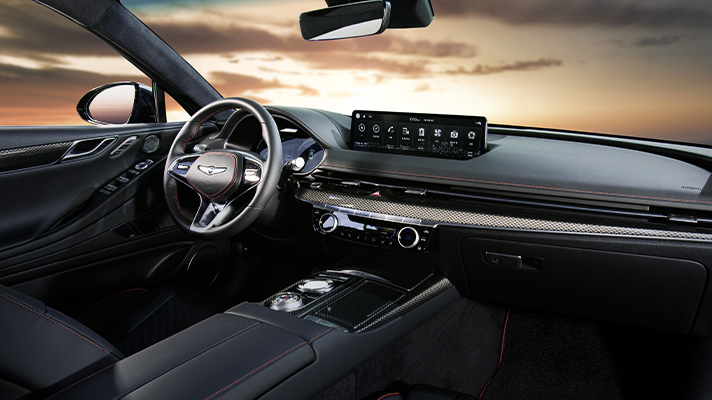
For reference, the dynamic package of the 3.5 twin-turbo engine also includes Active Noise Control (ANC-R). This technology was introduced to improve driving performance and retain a luxurious and cozy feel by applying Pilot Sport 4S tires with a higher grip and tighter sidewalls. This technology detects a sudden wheel movement in the suspension, predicts the resonance that may occur, and sends a sound that cancels it out to the speaker. This was first introduced in the GV80 for the high possibility of low-frequency noise of the SUV-shaped body structure, and the G80 Sport Dynamic Package was applied because of the high-performance tires with a low aspect ratio. All this was possible for the automaker's commitment not to miss out on both performance and comfort.
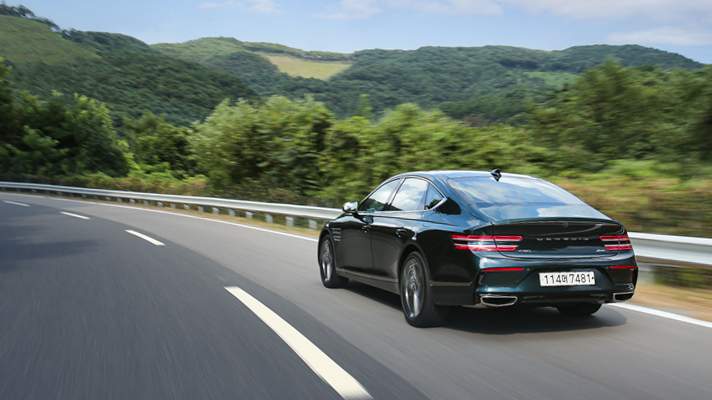
The sports package and dynamic package added to the G80 may seem small, inconspicuous changes. However, it is meaningful in that it greatly expanded the scope of choice, which is becoming more and more important in the luxury market. I wish every owner of G80 could try using all the features mentioned above. As the saying goes, If you don't scale the mountain, you can't view the plain, it's not enough to just house high-tech specs. I recommend G80 owners to build their own car through custom mode. This is the most enjoyable way to ride a cutting-edge luxury sports sedan.
by Dong-Hee Lee
He started his career as an automotive journalist in . He became known for his columns such as “Tiburon Diary” and “How to restore ’69 Land Rover.” Since then, he has been a sales instructor, product planner, and sales strategist for Chrysler Korea and Jaguar Land Rover Korea, etc. He later became the head of a dealership and is now working as an experienced columnist/consultant.
Photograph by Dae-Il Choe, Beom-Seok Kim
◆ This column was written in accordance with the author's subjective opinion and may differ from the HMG Journal's point of view.
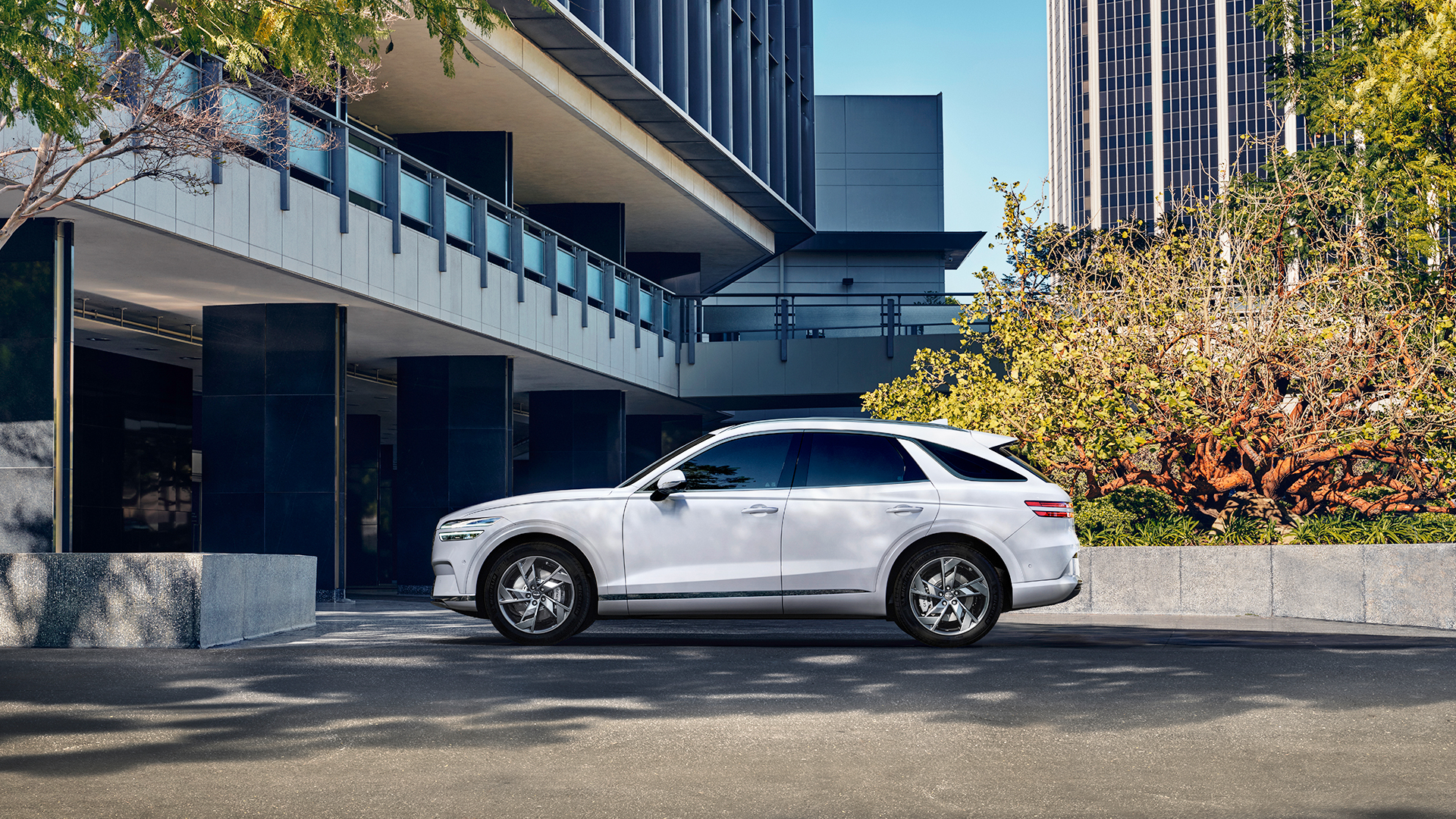
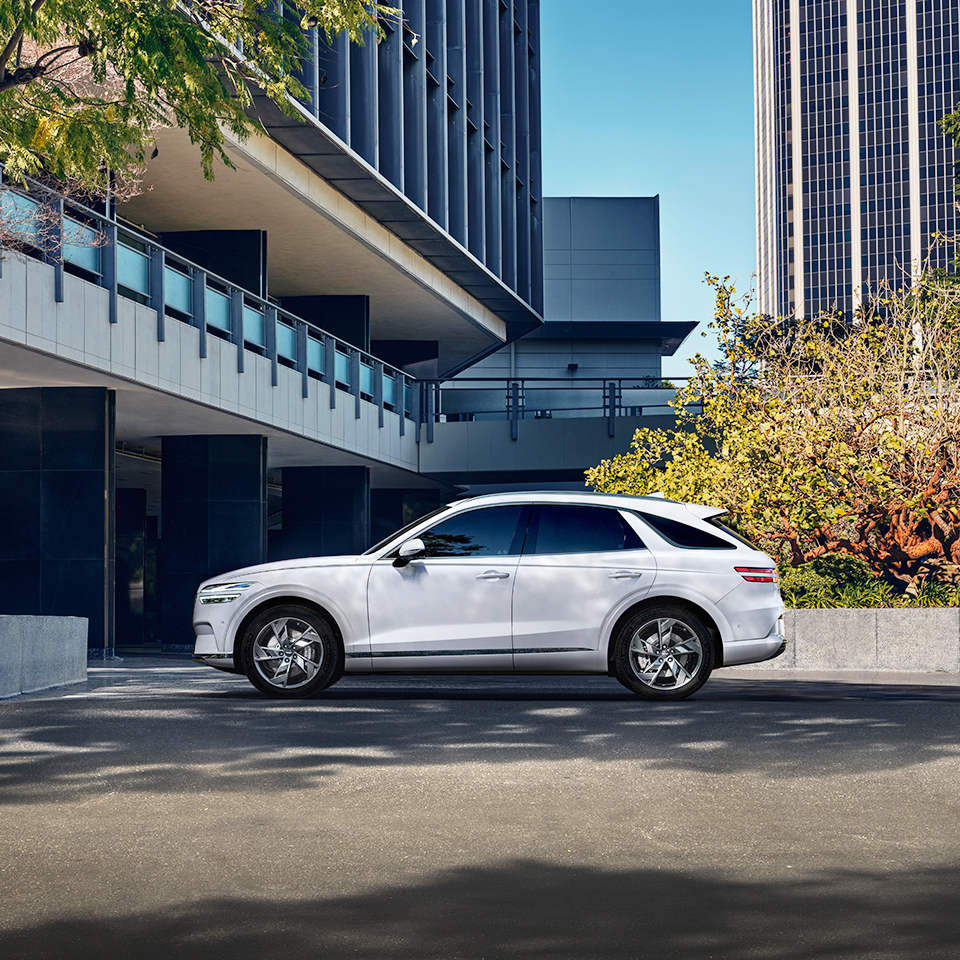
Electrified GV70: Obsession with Balance
2022.04.08 7min read